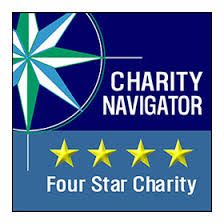Medicare Part A, B, C, and D: What's the difference?
Open enrollment will begin October 15 through December 7, for coverage changes effective in January 2021 - the time when you can make changes to your Medicare coverage. From now until Dec. 7, you can enroll in a new Medicare prescription drug plan or switch from Original Medicare to a Medicare Advantage plan (and vice versa).
When you're first selecting a Medicare plan, you may be faced with an overwhelming number of choices. One of the most challenging parts of understanding Medicare is how the different parts fit together.
In the post, you'll read about the difference between Original Medicare (Parts A and B) and Medicare Advantage (Part C). You'll learn what else to keep in mind as you are picking a plan.
Original Medicare
Traditional Medicare) is insurance administered by the federal government. It consists of Part A, which covers hospital services, and Part B, which covers expenses like doctor's appointments.
If you have Original Medicare, you can enroll in other plans for additional coverage. You can add a Part D plan to cover prescription drugs. You can also select a Medigap plan, which helps cover the costs of services under Parts A and B.
Tip: If you have a chronic disease like hidradenitis suppurativa, it's generally a good idea to add a prescription drug plan and a Medigap plan to make sure that all your services are covered as fully as possible.
There is an initial enrollment period for Medigap. During this time, you cannot be denied coverage and will not be charged more due to pre-existing conditions. You can try to purchase a plan outside of your Medigap enrollment period, but companies can choose whether to sell you a plan and charge a higher rate. Some state insurance laws can impact your ability to buy a plan outside of your Medigap enrollment period.
Original Medicare (sometimes called Medicare Advantage)
Another option is to choose a Medicare Advantage plan (sometimes called Medicare Part C). Typically, you are automatically enrolled in Part A when you turn 65 and usually don't have to pay a premium for it. With Medicare Advantage, you'll still pay a premium for Medicare Part B, but all your benefits will be bundled under a single plan from a private insurance company.
Medicare Advantage plans are administered by private insurance companies that contract with the federal government.
Pros: Medicare Advantage plans are more popular than ever. For many, the option of having a single plan that covers all components of your health plan feels familiar and easy. Medicare Advantage is most similar to the benefits structure you may have received through an employer. While Medicare Advantage plans vary in terms of price and benefits, many offer additional coverage like vision and dental.
Cons: Keep in mind that if you have a Medicare Advantage plan, you'll need to get a referral from your primary care provider to see a specialist, like a dermatologist or a rheumatologist. If you have a Medicare Advantage plan, you may need to see health care providers that are in-network, which means that a more limited number of specialists may be available to you.
Choosing a plan
As you can see, there's a lot to keep in mind when it comes to picking a plan. The right choice for you will depend on your whole health picture, the medications that you take on a regular basis, and other factors.
The Medicare Plan Finder is an excellent resource to explore plan options in your area. You can use the plan finder to look at Original Medicare plan combinations, with supplemental coverage and a prescription drug plan. You can also compare your existing plan with other options.
The plan finder will provide an estimate of your annual costs for each of your plan options, including premiums and drug costs.
Get support while shopping
Remember, our Patient Support is here to help! Reach out today for more information about Medicare Open Enrollment or to get connected with in-person assistance to select a Medicare plan.





